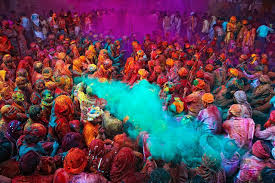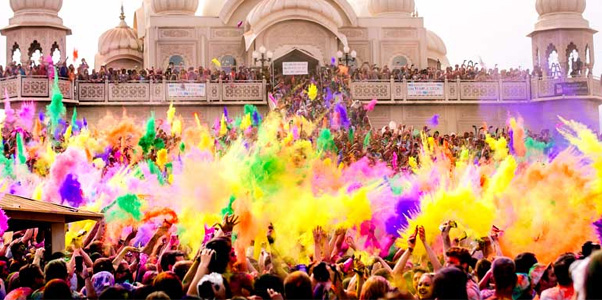
Holi: History And Celebration Of Festival Of Colors In India
Holi: History And Celebration Of Festival Of Colors In India
Holi is a Hindu spring celebration in India and Nepal, otherwise called the “celebration of hues” or the “celebration of adoration”. The celebration means the triumph of good over malevolence, the landing of spring, end of winter, and for some, a merry day to meet others, play and giggle, overlook and excuse, and repair broken connections, and is likewise celebrated as a thanksgiving for a decent gather. It goes on for 2 days starting on the Purnima (Full Moon day) falling within the Bikram Sambat lunisolar calendar month of Falgun, that falls somewhere near the end of February and therefore the center of March within the Gregorian schedule. The main day is known as Holika Dahan or Chhoti Holi and the second as Rangwali Holi, Dhuleti, Dhulandi or Dhulivandan.

The history behind Holi festivity:
There was at one time a devil lord by the name of Hiranyakashyap who won over the kingdom of earth. He was egoistic to the point that he told everyone in his kingdom to revere just him. Be that as it may, to his incredible disillusionment, his child, Prahlad turned into a vigorous enthusiast of Lord Narayana and declined to love his dad.

Hiranyakashyap attempted a few approaches to kill his child Prahlad, however, Lord Vishnu spared him inevitably. At long last, he asked his sister, Holika to enter a bursting fire with Prahlad in her lap. For, Hiranyakashyap realized that Holika had a help, whereby, she could enter the fire unscathed.

Holi is praised as a celebration of the triumph of good over fiendishness.
Misleadingly, Holika persuaded youthful Prahlad to sit in her lap and she herself sat down in a bursting fire. The legend has it that Holika needed to pay the cost of her evil yearning by her life. Holika didn’t know that the aid worked just when she entered the fire alone.
Prahlad, who continued droning the name of Lord Narayana this while, turned out unharmed, as the ruler favored him for his outrageous commitment.

Subsequently, Holi gets its name from Holika. What’s more, is praised as a celebration of the triumph of good over shrewdness.
Holi is likewise celebrated as the triumph of an aficionado. As the legend portrays that anyone, howsoever solid, can’t hurt a genuine enthusiast. What’s more, the individuals who set out torment a genuine enthusiast of god should be diminished to powder.
Edited By articlesworldbank.com
